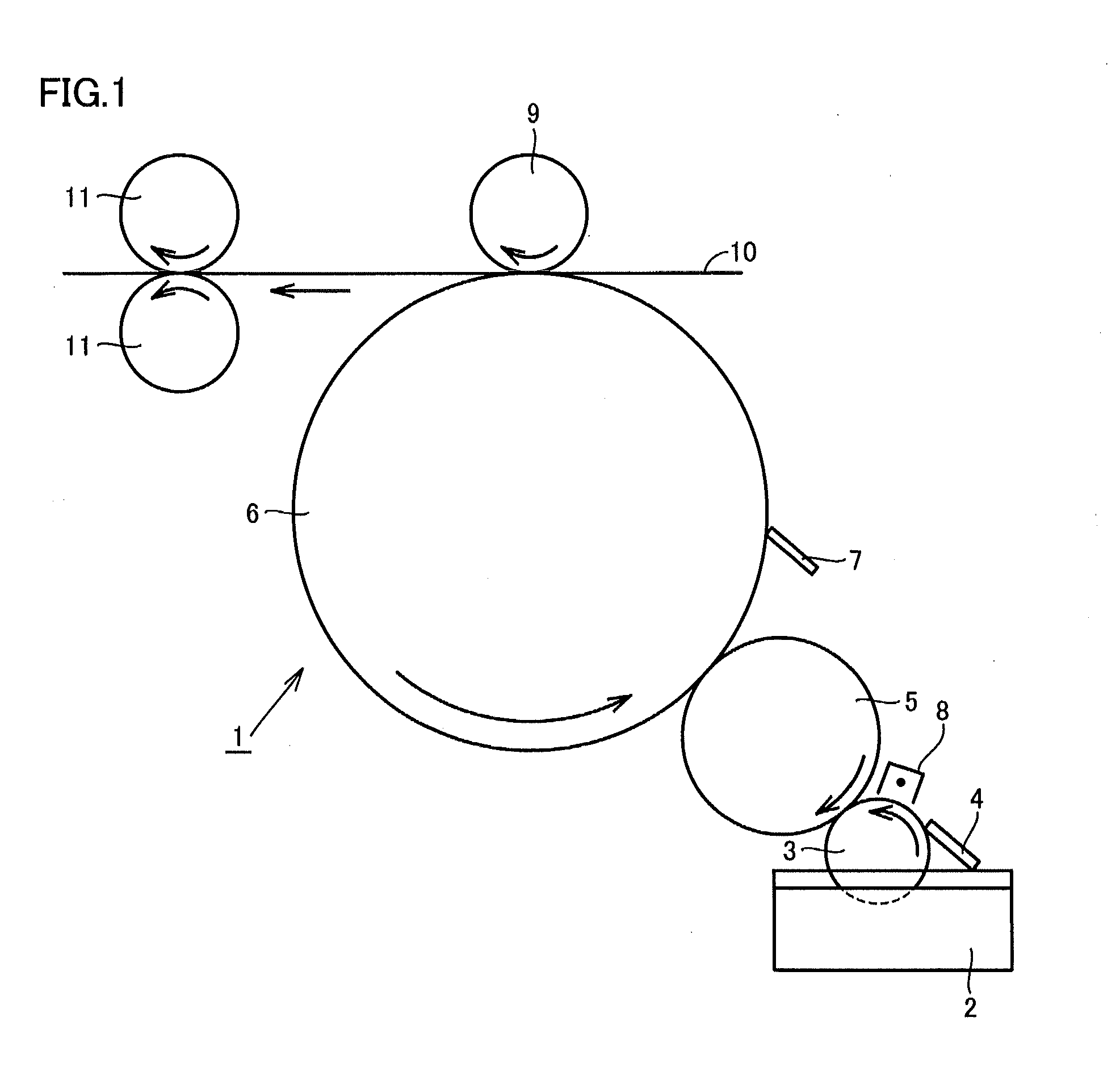Liquid developer
a liquid developer and developer technology, applied in the field of liquid developers, can solve the problems of electrophotographic image formation failure, decrease in the electrical resistance of toner particles, etc., and achieve the effects of adequate image density, high image quality, and increased pigment ratio
- Summary
- Abstract
- Description
- Claims
- Application Information
AI Technical Summary
Benefits of technology
Problems solved by technology
Method used
Image
Examples
example 1
[0106]200 parts of glass beads were added to: 250 parts of acetone; 60.4 parts of Polyester Resin 1 as the resin included in the toner particles, 13.5 parts of carbon black (trademark: “Mogul L,” manufactured by Cabot Corporation) as the first pigment; 10.5 parts of C.I. Pigment Brown 25 (trademark: “PV Fast Brown HFR,” manufactured by Clariant Japan K.K.) as the second pigment; 1.5 parts of C.I. Pigment Blue 15:3 (phthalocyanine blue pigment) (trademark: “Fastogen Blue GNPT,” manufacture by DIC) as the third pigment; 4.5 parts of C.I. Pigment Yellow 180 (trademark: “Toner Yellow HG,” manufactured by Clariant Japan K.K.) as the fourth pigment; and 3.6 parts of pigment dispersant (trademark: “Ajisper PB-822,” manufactured by Ajinomoto Fine-Techno Co., Inc.). They were dispersed by means of a paint conditioner for three hours, and thereafter the glass beads were removed. Accordingly, a resin solution X in which the pigments were dispersed was produced.
[0107]Then, 6 parts of toner disp...
example 10
[0130]120.8 parts of Polyester Resin 2 as the resin included in the toner particles, 24.0 parts of carbon black (trademark: “Mogul L,” manufactured by Cabot Corporation) as the first pigment; 27 parts of C.I. Pigment Brown 25 (trademark: “PV Fast Brown HFR,” manufactured by Clariant Japan K.K.) as the second pigment; 1.8 parts of C.I. Pigment Blue 15:3 (phthalocyanine blue pigment) (trademark: “Fastogen Blue GNPT,” manufacture by DIC) as the third pigment; 6.0 parts of C.I. Pigment Yellow 180 (trademark: “Toner Yellow HG,” manufactured by Clariant Japan K.K.) as the fourth pigment; and 1.2 parts of C.I. Pigment Red 122 (magenta pigment) (trademark: “FASTOGEN Super Magenta RTS,” manufactured by DIC) as an additional pigment were added, they were mixed sufficiently by means of a Henschel mixer, and thereafter melted and kneaded by means of a co-rotating twin shaft extruder at a heating temperature in the roll of 100° C. Subsequently, the mixture thus obtained was cooled and thereafter...
example 11
[0133]A liquid developer (the total content of the pigments in the toner particles: 20% by mass) was produced in a similar manner to Example 1 except for the changes:
[0134]250 parts of acetone;
[0135]71.6 parts of Polyester Resin 1;
[0136]9.0 parts of carbon black (trademark: “Mogul L,” manufactured by Cabot Corporation) as the first pigment;
[0137]7.0 parts of C.I. Pigment Brown 25 (trademark: “PV Fast Brown HFR,” manufactured by Clariant Japan K.K.) as the second pigment;
[0138]1.0 part of C.I. Pigment Blue 15:3 (phthalocyanine blue pigment) (trademark: “Fastogen Blue GNPT,” manufacture by DIC) as the third pigment;
[0139]3.0 parts of C.I. Pigment Yellow 180 (trademark: “Toner Yellow HG,” manufactured by Clariant Japan K.K.) as the fourth pigment;
[0140]2.4 parts of pigment dispersant (trademark: “Ajisper PB-822,” manufactured by Ajinomoto Fine-Techno Co., Inc.); and
[0141]6 parts of N-vinylpyrrolidone / alkylene copolymer (trademark: “Antaron V-216,” manufactured by GAF / ISP Chemicals) as ...
PUM
 Login to View More
Login to View More Abstract
Description
Claims
Application Information
 Login to View More
Login to View More - R&D
- Intellectual Property
- Life Sciences
- Materials
- Tech Scout
- Unparalleled Data Quality
- Higher Quality Content
- 60% Fewer Hallucinations
Browse by: Latest US Patents, China's latest patents, Technical Efficacy Thesaurus, Application Domain, Technology Topic, Popular Technical Reports.
© 2025 PatSnap. All rights reserved.Legal|Privacy policy|Modern Slavery Act Transparency Statement|Sitemap|About US| Contact US: help@patsnap.com

